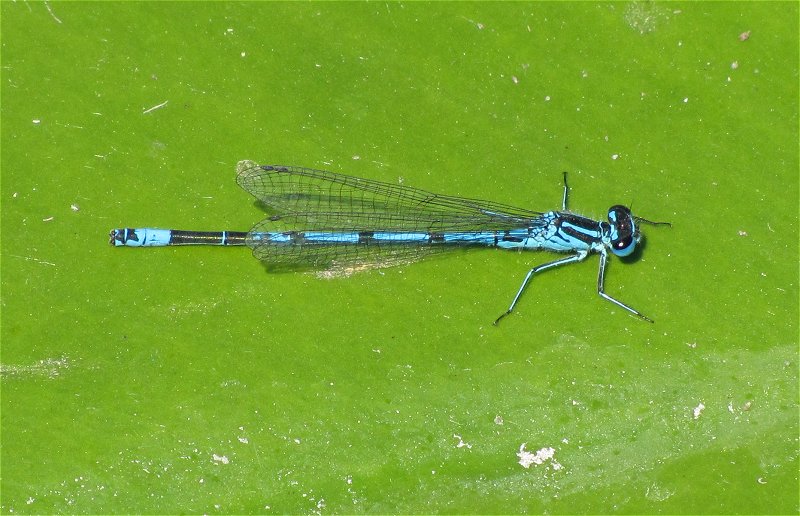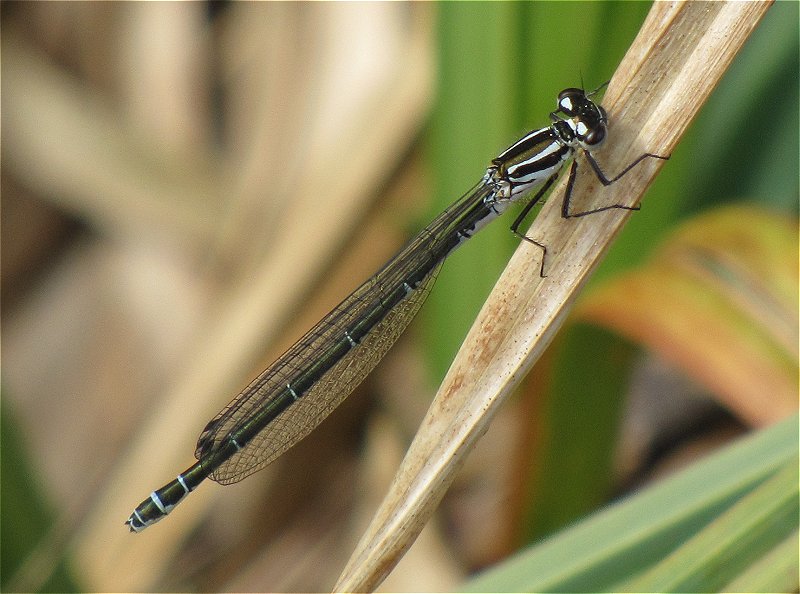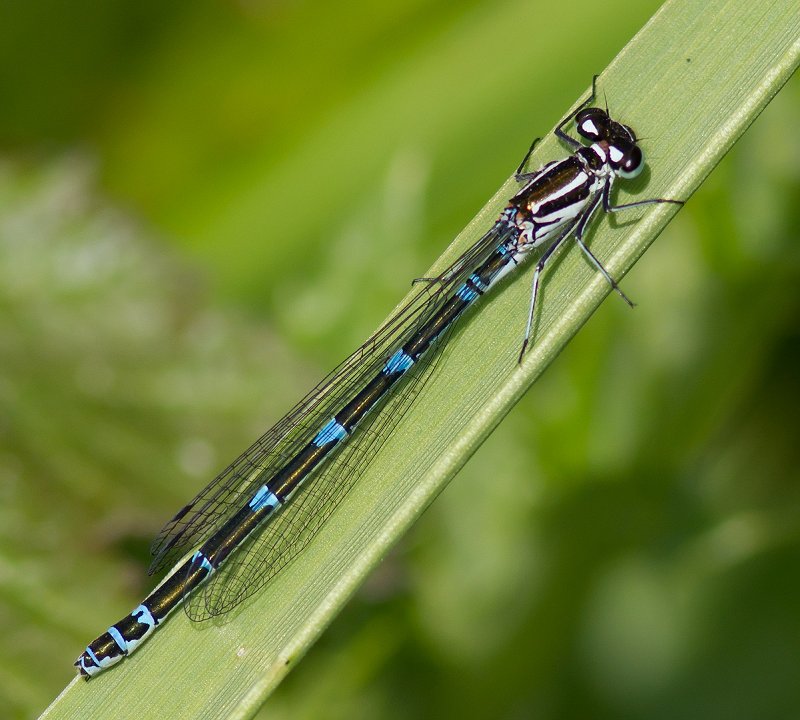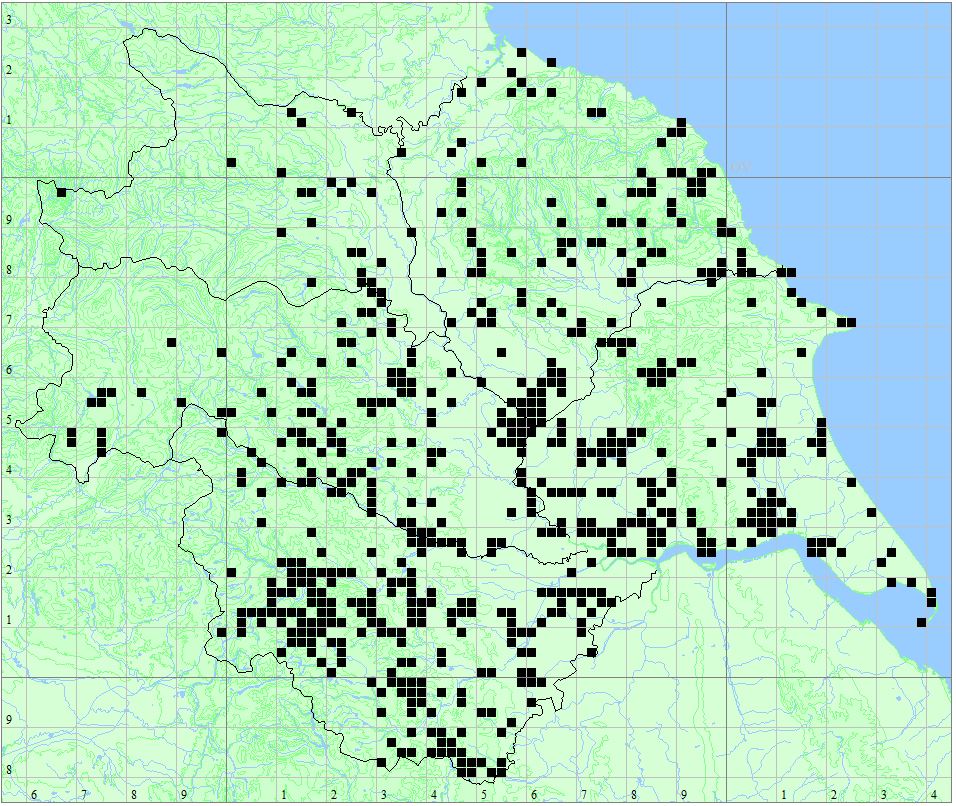<-Previous Species – Next Species->
Length
33mm, Wings 36-44mm
Males
Bright blue body with black markings; thorax black top with 2 thin antehumeral stripes; abdomen black U-shaped mark segment 2, segment 8 blue and 9 marked black; eyes bright spots not joined by a bar.
Females
2 colour forms:-
1) Body green with black markings on upper surface; segment 2 with black thistle shape.
2) Blue form has “mercury” shape on segment 2; rest of black upper markings are more extensive; narrow pale antehumeral stripes.
Note: The shape of the pronotum is the only conclusive way to seperate this species from Variable Damselfly. Personal observations have highlighted that female Azure Damselflies lack the bar between the eye spots, compared to Variable Damselfly.
Comments
Initially this species is more abundant than the similar Common Blue Damselfly with which it can be easily confused. It is easy to make the mistake of identifying early blue damselflies as being Azure, then assuming on later visits that this is still the case. However after four of five weeks, Azure can suddenly become harder to find as Common Blue Damselfly become more abundant.
Habitat
Wide range of habitats from garden ponds, lakes, ditches, streams, canals and rivers to peaty pools. The main requirement is plenty of marginal vegetation in sheltered locations. Frequently settles on floating vegetation, as well as being readily found in adjacent grasslands and sheltered woodland edges.
Behavior
Not territorial. Copulation is prolonged on warm sunny days. Pairs oviposit in tandem into soft plant tissue, often submerging to do so. Larvae live among submerged vegetation and emerge after one year. Emergence takes place on marginal vegetation or flower spikes in the centre of water bodies. Females emerge first, followed a few days later by the males.
Flight Period
 Status
Status
Common
Distribution Map
Locations
- Rodley Nature Reserve
- Moorgates Quarry LNR
- Thorne Moors – Humberhead Peatlands NNR
- Thorpe Marsh
- Oakhill & Goole Brick Ponds
- Paull Holme Strays
- Treeton Dyke
- Rabbit Ings
- River Foss, Towthorpe Bridge
- Walton Colliery Nature Park
- Pugneys Country Park
- The Yorkshire Arboretum
- Timble Ings
- Fairburn Ings
- Potteric Carr
- Fen Bog
- Spurn Point
- Skipwith Common
- Saltmarshe Delph
- River Hertford
- Pulfin and High Eske Nature Reserve
- Pocklington Canal
- North Cave Wetlands
- Leven Canal
- Filey Dams
- Eastrington Ponds
- Broomfleet Washlands
- Noddle Hill Nature Reserve
- Allerthorpe Common
- Tophill Low Nature Reserve



